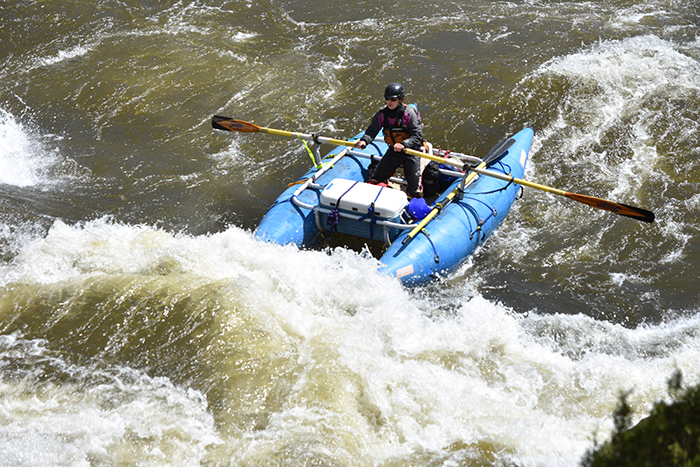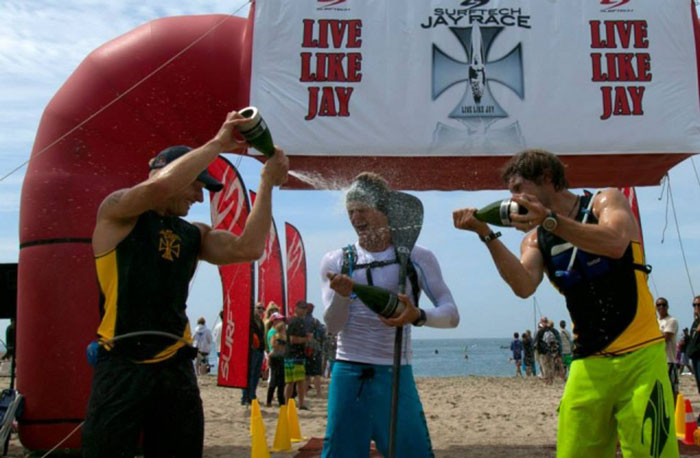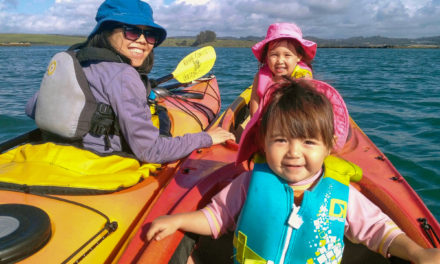- California Enduro Series Announces 2024 Schedule - 11/19/2023
- ASHLAND MOUNTAIN CHALLENGE 2023 – CES RACE REPORT - 10/04/2023
- China Peak Enduro 2023 – CES Race Report - 09/04/2023
Paddlers and outfitters prepare for unprecedented high-water season on California rivers and beyond
By Cari Morgan

Whitewater fun on the Merced (James Kaiser/O.A.R.S.).
For river guides and whitewater lovers, high-water rafting seasons in the western US are responsible for many a tall tale, told in celebration of big flips, upside-down boats, long swims and daring heroism. Thanks to an above-average snowpack across much of the Western US, the 2017 river season has shaped up to be one of those years, especially in California which received a record-setting amount of precipitation and snowfall.
When is high-water season in the West?
On rivers across the West, the high-water window typically occurs from mid-May to mid-June with the possibility of lasting longer during years with above-average snowpacks.
“High water may last a few weeks in thin snowpack years, or prevail for a month or longer depending on how warm it is, how consistently warm it stays, and how cold it is getting in the high mountains at night,” according to Eric Riley, O.A.R.S. Wyoming manager and founder of the Swiftwater Safety Institute.
In California, many outfitters are planning for exciting, high-water trips through June and even into July depending on the river. For example, on the American River near Sacramento, some companies have increased minimum age requirements for early-season trips, even on the popular South Fork American which is traditionally a fun and splashy, family-friendly rafting experience. On rivers like the Class IV+ Tuolumne River, which can occasionally reach unsafe water levels for rafting, outfitters will monitor water conditions daily throughout the summer. During May and June, a change in flow by just a few hundred cubic-feet-per-second (cfs) often determines whether or not a Tuolumne trip will launch that day. All of this water also means that free-flowing rivers like the Merced near Yosemite, which traditionally has a shorter window for rafting each season, will be running into August this year.
What to expect on the river
Prior rafting experience is not always necessary, but people considering a high-water rafting trip should be in good health, capable swimmers and physically fit. Some outfitters may also require a swim practice prior to certain trips when water levels are running higher than normal.
“Expect a faster paced trip that will require higher levels of muscular and cardiovascular exertion,” says Riley. “Expect to get wet, move fast, paddle hard and swim your butt off in the occasion that you find yourself in the water.” Being comfortable with your swimming ability is a must, he adds.
According to a recent article in Rafting Magazine by Commodore Trevor, long, cold swims are the biggest concern for high-water trips.
“Big snow packs mean that runoff will last well into the summer and the shock of cold water immersion can be debilitating even during hot summer trips,” writes Trevor. “Even if your safety boat is on point expecting long cold swims is the name of the game in big water boating.”
In addition to cold, fast-moving water and dangerous debris like trees and root balls, high-water conditions can create big hydraulic features, unpredictable crashing waves from unusual angles, strong eddylines, and boils.
“Wrap rocks turn into sticky holes hiding terminal surfs,” according to Trevor. “Trees and shrubs on the bank turn into hungry strainers hoping to gobble up unsuspecting swimmers.”
In preparation for commercially-run high-water trips, outfitters will often send their guides on multiple training trips as water flows increase to study the high-water lines and check for hazardous conditions like strainers, which can pin a swimmer and force them under water.
Not for the faint of heart …
If you go on an early-season rafting trip, in addition to experienced guides who are familiar with high water, your trip may also be supported by safety kayakers or catarafts. Since these boats are quicker and have more maneuverability, they provide an added layer of security in big water. And in the case of an unexpected flip, safety boats may be able to assist people who have become separated from their raft.
“Safety boats are commonly piloted by only one person, with one responsibility – to make sure your team has a stellar high-water experience,” says Riley.
Still, with fast-moving water and fewer eddies, safety boats can’t always reach swimmers immediately after a boat flips. So if the idea of going for a cold and lengthy involuntary swim or self-rescuing (aggressively swimming to a nearby raft or shore) makes you nervous, then a high-water rafting trip might not be a good fit. Families and people looking for a fun, but more leisurely pace should consider planning rafting trips during July through September when river flows have typically returned to normal levels.
Preparing for a high-water rafting trip
There are inherent risks in river rafting, and even if you go with highly-trained and experienced guides, you are ultimately responsible for your own safety. Being prepared for the various situations that could arise on the river and dressing for early-season rafting conditions are of utmost importance.
For the highly adventurous, though, there’s nothing quite like high water.

A safety boat going through a rapid (Mountain & River Adventures).
Cari Morgan is the Communications Manager for O.A.R.S. A former PR consultant and veteran wordsmith, she spent 10+ years promoting various organizations and businesses before finding what she considers to be her “dream job” in the outdoor industry.












